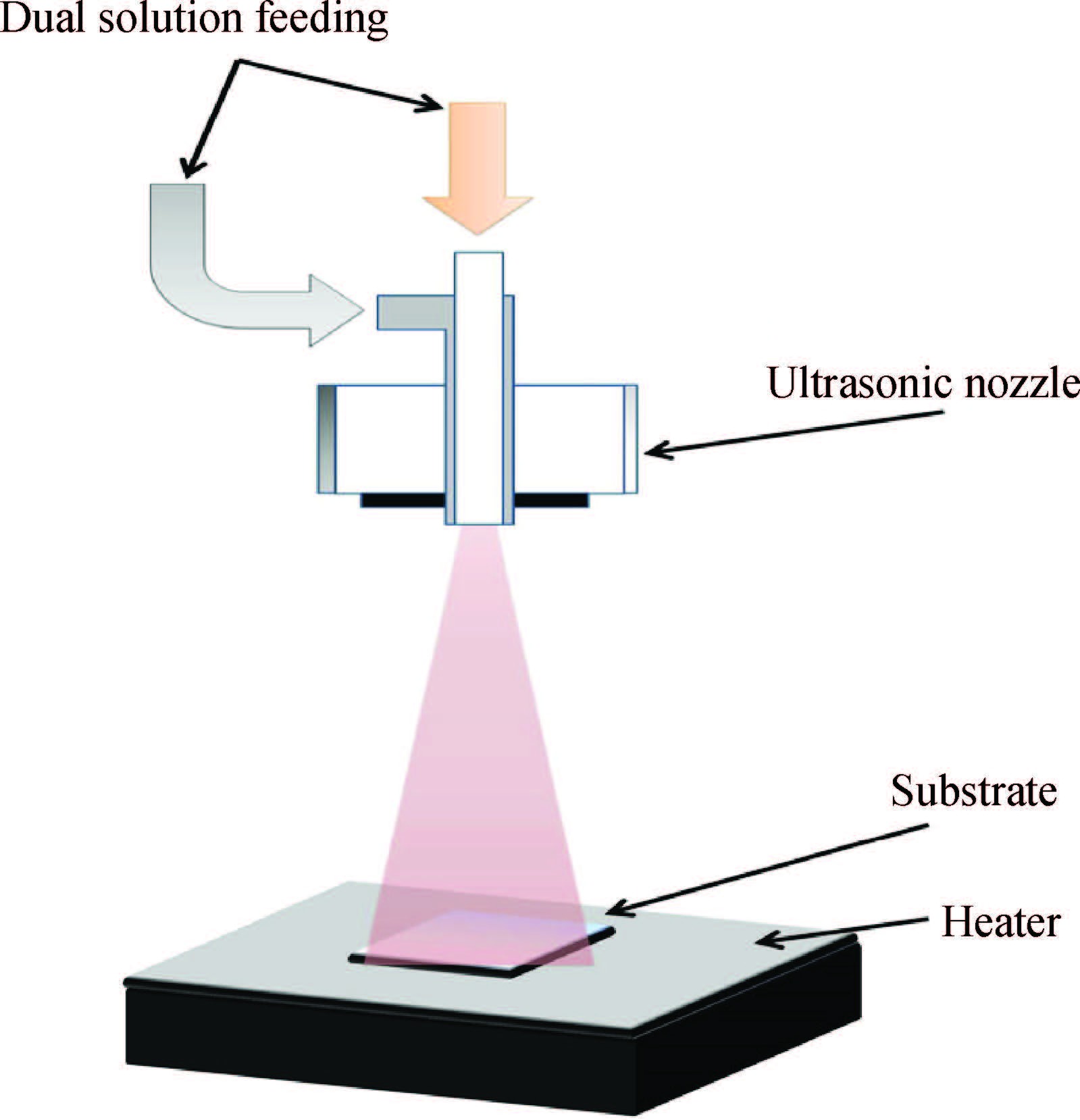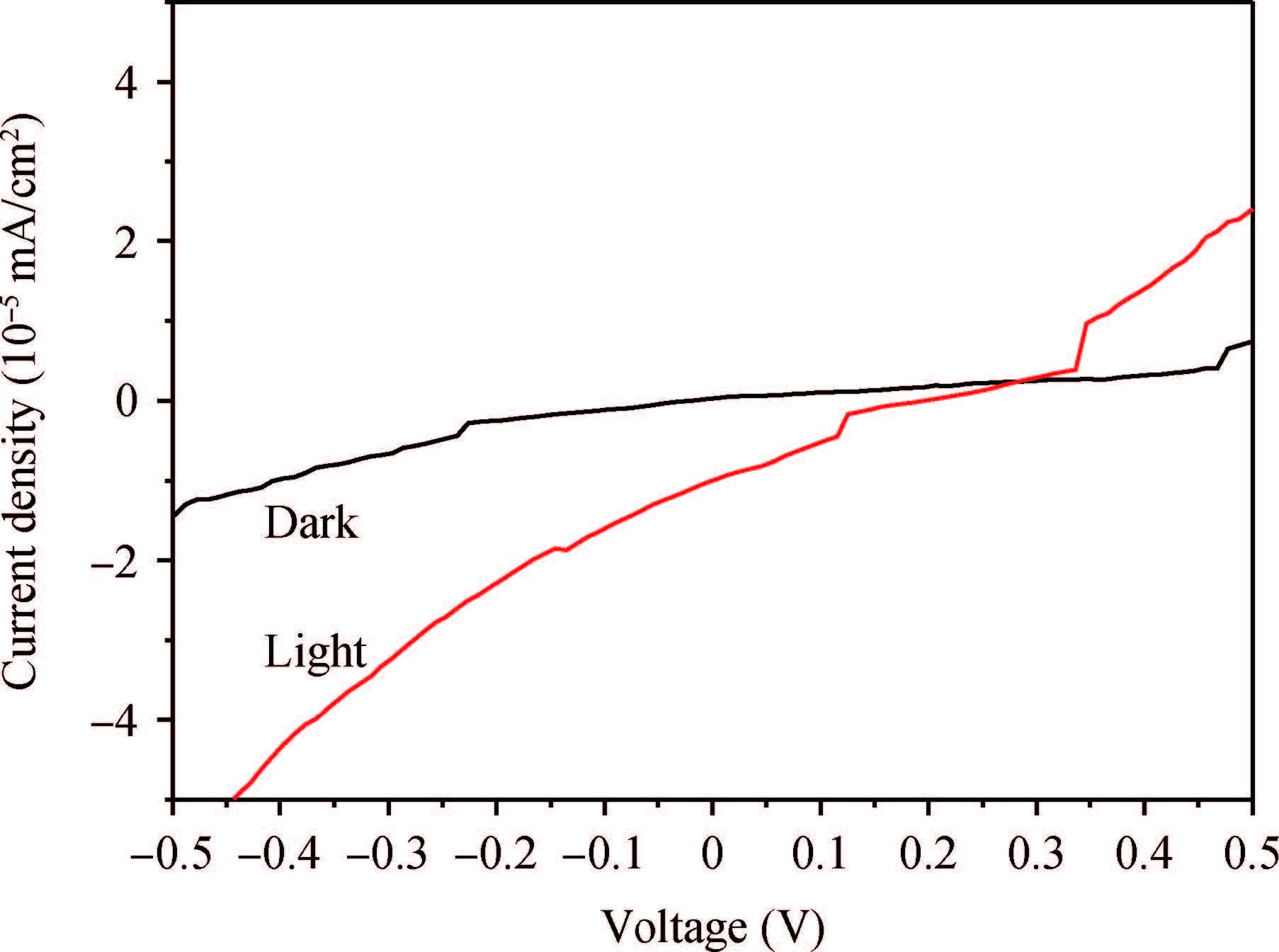| Citation: |
D. M. Marathe, H. S. Tarkas, M. S. Mahajan, G. S. Lonkar, S. R. Tak, J. V. Sali. Bulk heterojunction thin film formation by single and dual feed ultrasonic spray method for application in organic solar cells[J]. Journal of Semiconductors, 2016, 37(9): 093003. doi: 10.1088/1674-4926/37/9/093003
****
D. M. Marathe, H. S. Tarkas, M. S. Mahajan, G. S. Lonkar, S. R. Tak, J. V. Sali. Bulk heterojunction thin film formation by single and dual feed ultrasonic spray method for application in organic solar cells[J]. J. Semicond., 2016, 37(9): 093003. doi: 10.1088/1674-4926/37/9/093003.
|
Bulk heterojunction thin film formation by single and dual feed ultrasonic spray method for application in organic solar cells
DOI: 10.1088/1674-4926/37/9/093003
More Information
-
Abstract
We here present a way of preparing the polymer:fullerene BHJ using dual feed method which can lead to formation of pure phases. In this report, we present results of our initial experiments in this direction. The effect of process parameters on the thickness and surface roughness of the active layer has been discussed. The structural and optical properties have been studied using the optical microscope, UV-visible spectroscopy and photoluminescence spectroscopy. Significant PL quenching indicates efficient charge separation in the BHJ formed using this technique. We have also compared the BHJ thin films prepared with this dual feed ultrasonic technique with the single feed spray method. The BHJ formed using this technique has been used as an active layer in OSC. -
References
[1] Krebs F C. Fabrication and processing of polymer solar cells: a review of printing and coating techniques. Solar Energy Materials & Solar Cells, 2009, 93: 394 http://cn.bing.com/academic/profile?id=2004079776&encoded=0&v=paper_preview&mkt=zh-cn[2] Steirer K X, Reese M O, Rupert B L. Ultrasonic spray deposition for production of organic solar cells. Solar Energy Materials & Solar Cells, 2009, 93: 447 http://cn.bing.com/academic/profile?id=2061903828&encoded=0&v=paper_preview&mkt=zh-cn[3] Chen L M, Hong Z R, Wei L K. Multi-source/component spray coating for polymer solar cells. ACS Nano, 2010, 4(8): 4744 doi: 10.1021/nn901758p[4] Tait J G, Rand B P, Heremans P. Concurrently pumped ultrasonic spray coating for donor: acceptor and thickness optimization of organic solar cells. Organic Electron, 2013, 14(3): 1002 doi: 10.1016/j.orgel.2013.01.023[5] Heiberand M C, Dhinojwala A. Efficient generation of model bulk heterojunction morphologies for organic photovoltaic device modeling. Phys Rev Appl, 2014, 2: 014008 doi: 10.1103/PhysRevApplied.2.014008[6] Spanggaard H, Krebs F C. A brief history of the development of organic and polymeric photovoltaics. Solar Energy Materials & Solar Cells, 2004, 83: 125[7] Parnell A J, Cadby A J, Mykhaylyk O O. Nanoscale phase separation of P3HT PCBM thick films as measured by small-angle x-ray scattering. Macromolecules, 2011, 44(16): 6503 doi: 10.1021/ma2007706[8] Lonakar G S, Mahajan M S, Ghosh S S, et al. Modelling thin film formation by ultrasonic spray method: a case of PEDOT:PSS thin film. Organic Electronics, 2012, 13: 2575 doi: 10.1016/j.orgel.2012.07.013[9] Scharsich C, Lohwasser R H, Sommer M. Control of aggregate formation in poly (3-hexylthiophene) by solvent, molecular weight, and synthetic method. Journal of Polymer Science Part B: Polymer Physics, 2012, 50(6): 442 doi: 10.1002/polb.v50.6[10] Clark J, Silva C, Friend R H, et al. Role of intermolecular coupling in the photophysics of disordered organic semiconductors: aggregate emission in regioregular polythiophene. Phys Rev Lett, 2007, 98: 206406 doi: 10.1103/PhysRevLett.98.206406[11] Westacott P, Tumbleston J R, Shoaee S, et al. On the role of intermixed phases in organic photovoltaic blends. Energy Environ Sci, 2013, 6: 2756 doi: 10.1039/c3ee41821a -
Proportional views






 DownLoad:
DownLoad:




















